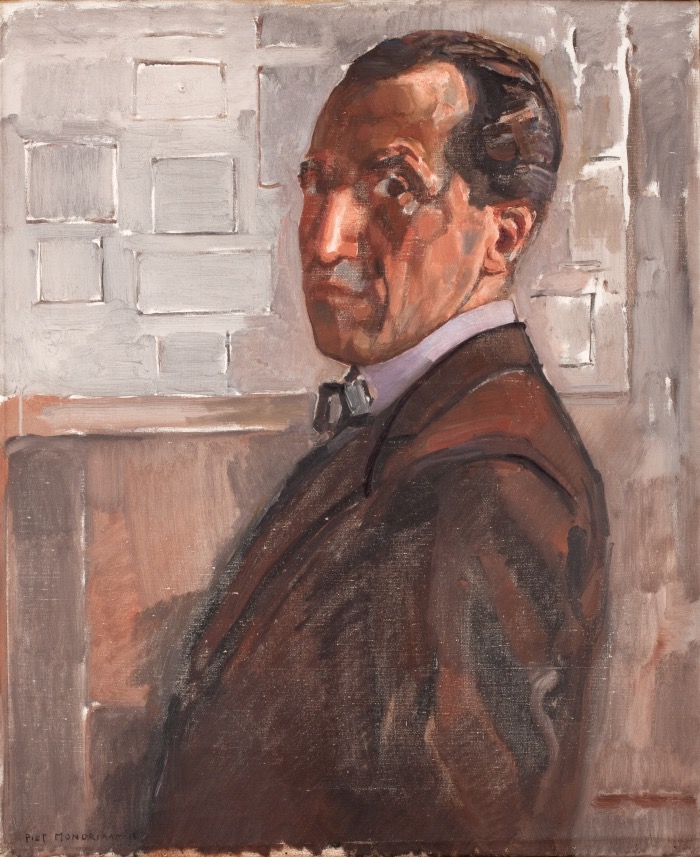
Piet Mondrian (1872-1944), Autoritratto – 1918.Olio su tela Kunstmuseum Den Haag
Mondrian’s most famous works are the result of the artist’s long quest for balance and perfection.
So if we are to summarise Mondrian’s career in a few works, we must bear in mind that his stylistic evolution starts with Naturalism and Impressionism, then moves on to Post-Impressionism, Fauves, Symbolism and Cubism, and finally arrives at the rational and unmistakable style that has made him truly famous.
In this post I present the works of Mondrian that you absolutely must know.
The works of Mondrian
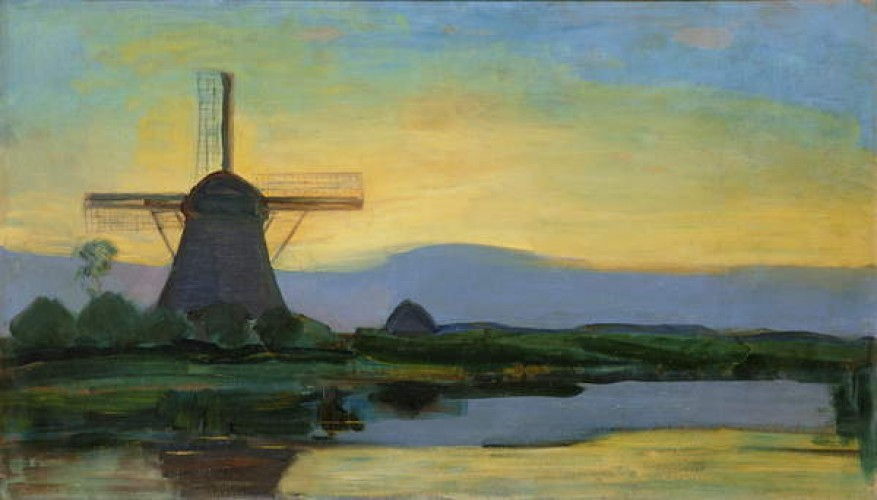
MONDRIAN, MULINO OOSTZIJDSE CON CIELO BLU, GIALLO E VIOLA (1907-1908)
In Mondrian’s works lie the secrets of an artistic revolution.
A pioneer of the De Stijl movement, he sought balance and harmony through straight lines and primary colours.
Here are the Mondrian works you need to know.
MONDRIAN, OOSTZIJDSE MILL WITH BLUE, YELLOW AND VIOLET SKY(1907-1908)
Piet Mondrian began his career as a figurative painter.
He studied at the Academy of Fine Arts in Amsterdam, which he completed in 1895, and was strongly influenced by Romanticism and Impressionism.
His early works have pastoral subjects and his use of colour is inspired by Symbolism and the Fauves.
Starting in 1899, he moved closer to spiritual and theosophical studies and in 1909 he joined the Dutch Theosophical Society, which spread the theosophical theories that there is only one divine truth to which all religions refer and that the ultimate goal of human beings is to elevate their spirits through meditation and mystical experiences.
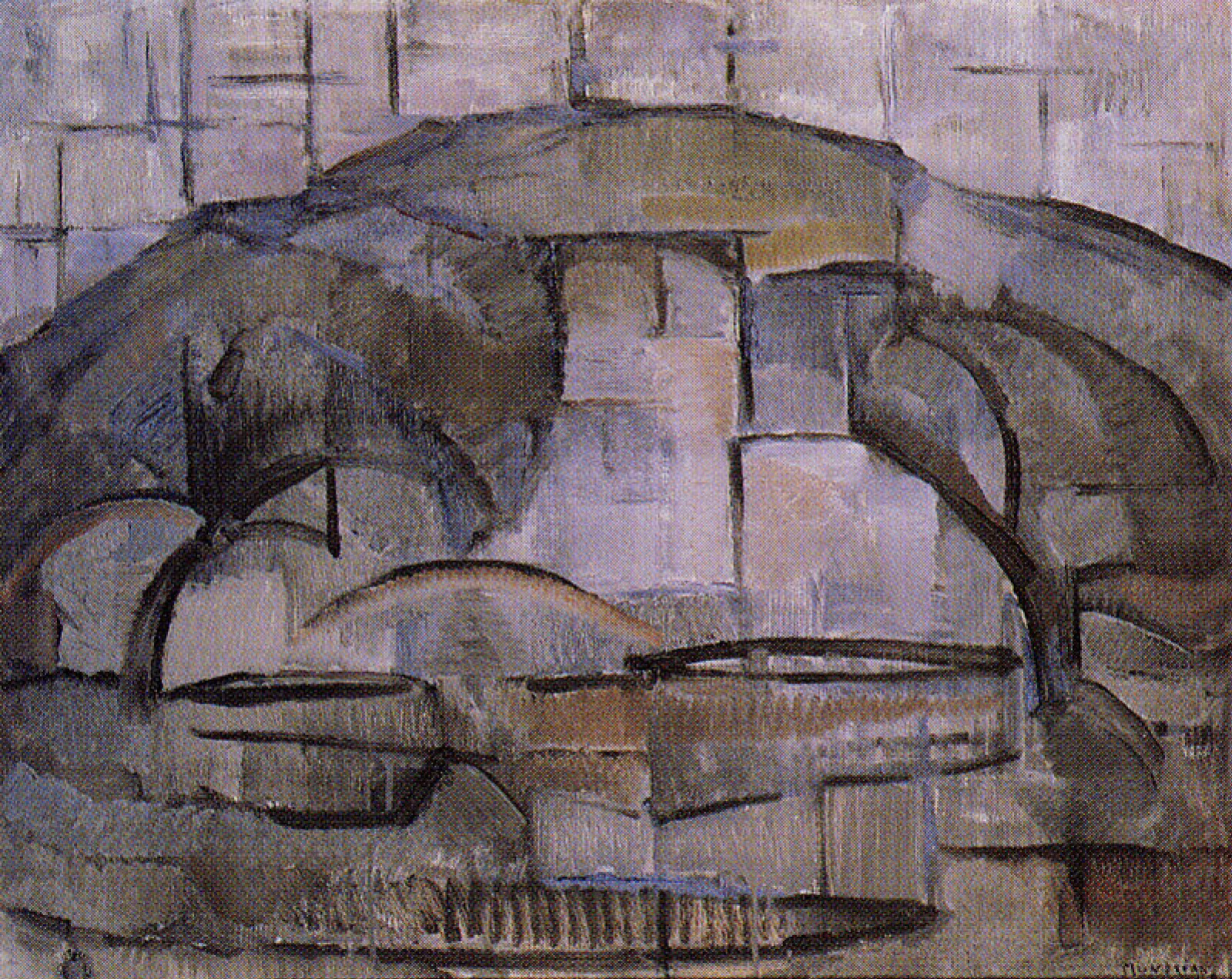
MONDRIAN, PAYSAGE (1912)
Mondrian began to desire to reduce everything around him to its purest essence and began to focus on the use of colour.
His move to Paris in 1911 led him to abandon naturalism for cubism. His style became more essential and straight lines and primary colours appeared in Mondrian’s works, which were to form the basis of his mature style.
Cubism, however, represents only a new stage in the research process that leads Mondrian to abstraction and the description of the world in its purest reality.
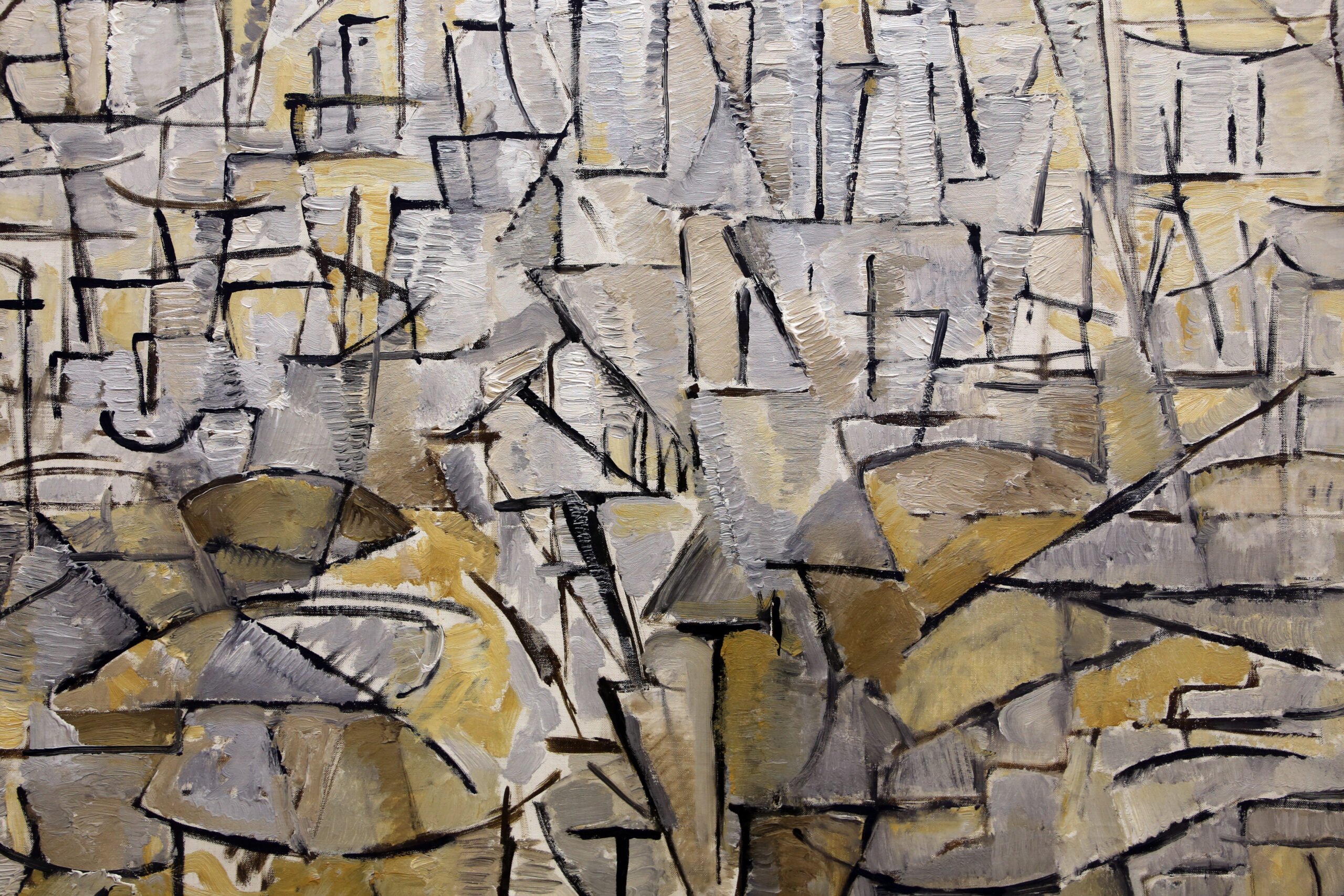
MONDRIAN, TABLEAU N. 4 (1913)
MONDRIAN, TABLEAU N. 4 (1913)
The Cubist phase leads Mondrian towards an increasingly extreme decomposition of reality.
Mondrian’s works increasingly began to represent reality as a set of horizontal and vertical lines, in an attempt to describe reality with a single, essential structure.
In 1914 Mondrian returned to Holland and met Theo van Doesburg, with whom he founded the magazine De Stijl, the magazine whose aim was to contribute to the development of a new aesthetic sense.
Mondrian published several essays in this iconic magazine in which he provided a definition of Neoplasticism, on which his artistic theory was based. He states that painting responds to a common need for certainty, clarity and order and that ‘behind the mutable natural form there is always the immutable pure reality’.
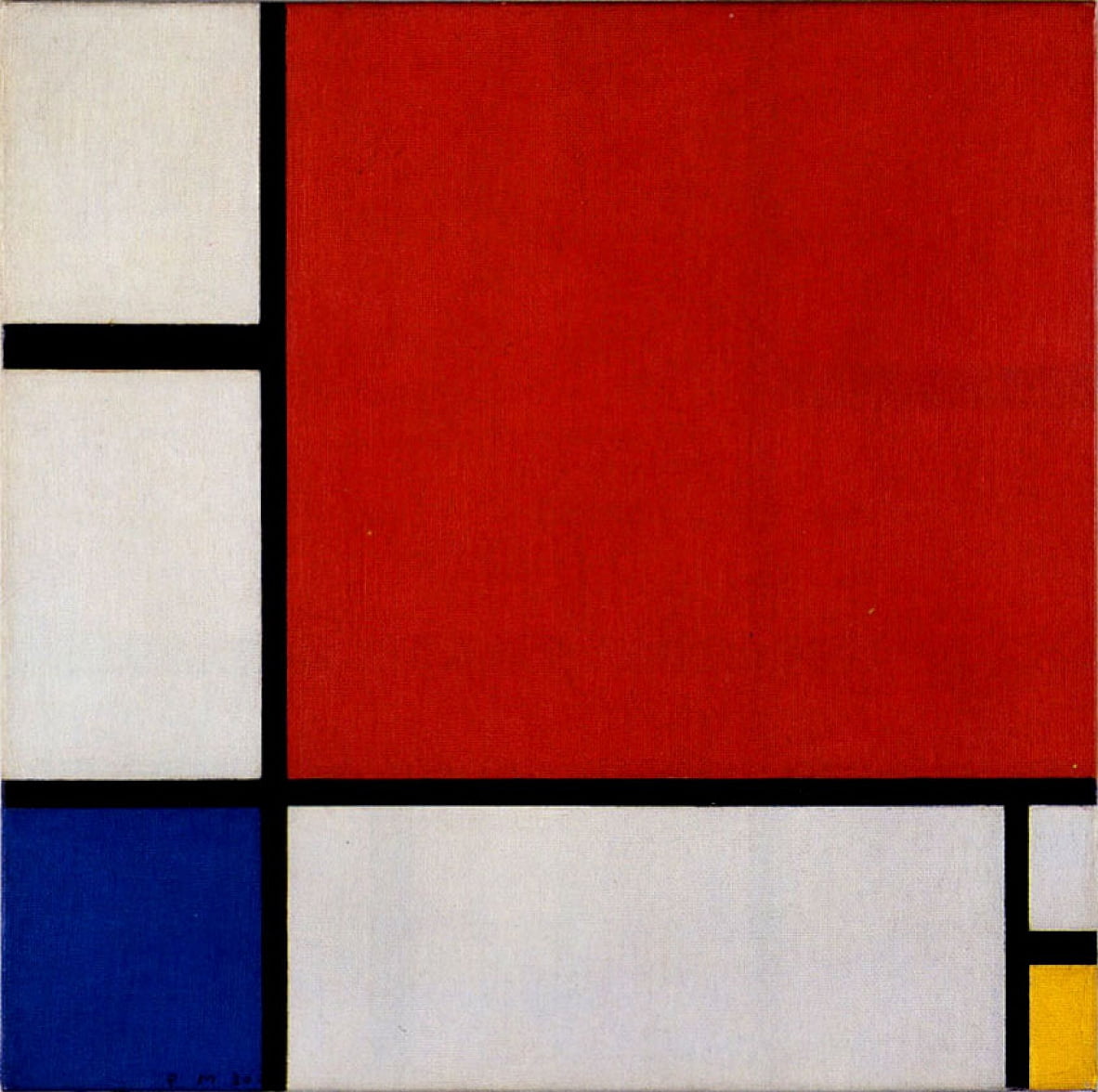
MONDRIAN, COMPOSIZIONE II (1929)
MONDRIAN, COMPOSITION II (1929)
After the end of World War I, Mondrian returned to Paris from 1919 to 1938. These were the years in which the artist defined his unmistakable style.
His long research led him to schematise reality according to precise mathematical rules, reducing forms to two elements: line and colour.
Mondrian’s works, therefore, are presented as straight lines, horizontal and vertical, which best define reality. The curved line is not permitted as it provides space for emotions and since these are also conveyed by colour, Mondrian only uses solid and flat colours.
Mondrian creates paintings in which the natural elements are present in their purest form: a network of black lines crossing each other at right angles, forming squares and rectangles, which the artist fills in with the three primary colours (red, yellow, blue) or with a single colour.
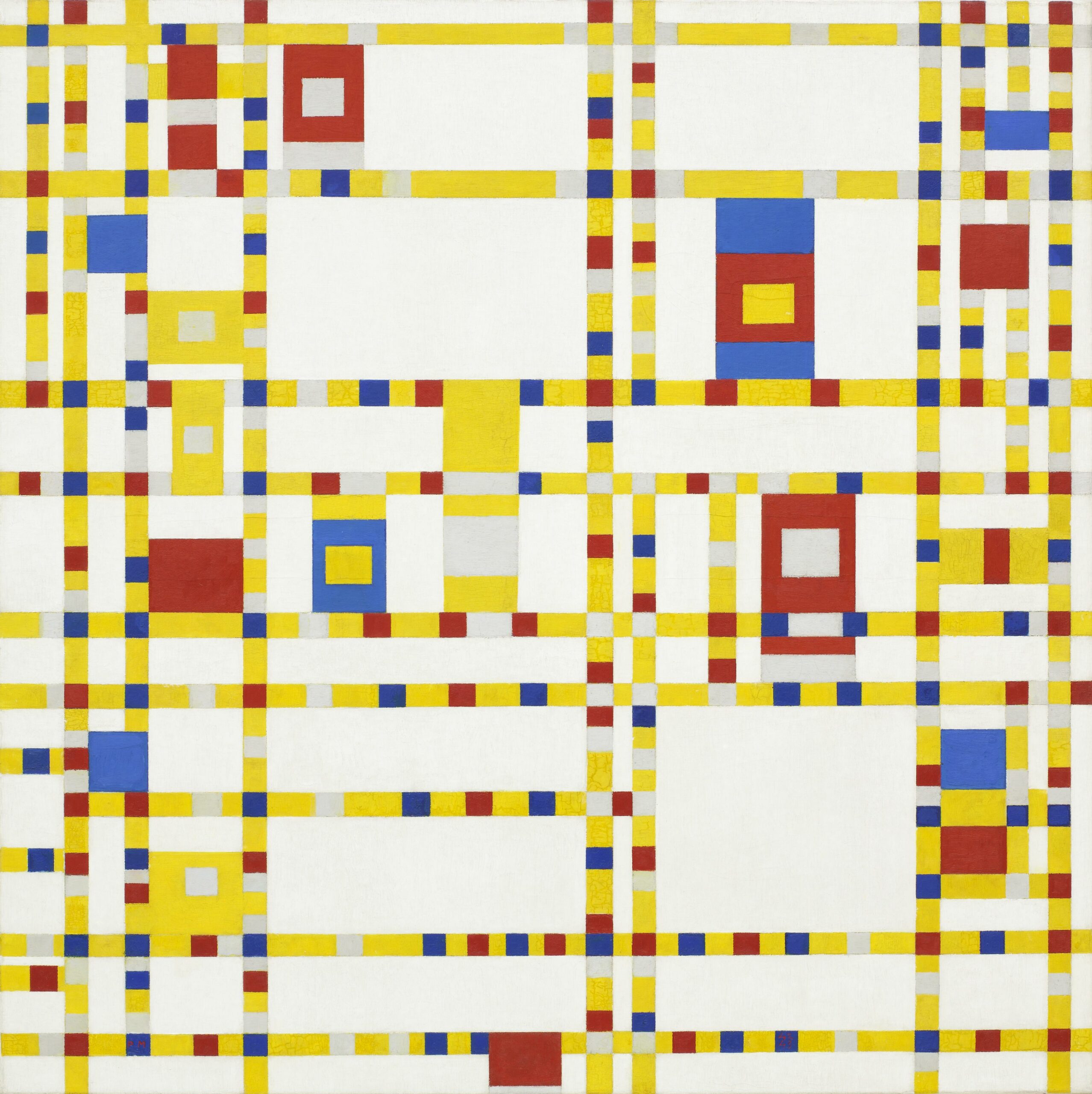
MONDRIAN, BROADWAY BOOGIE-WOOGIE (1942)
MONDRIAN, BROADWAY BOOGIE-WOOGIE (1942)
When World War II broke out, Mondrian moved to the United States and his style was renewed once again, influenced by the sparkling atmosphere of New York.
Mondrian’s works became brighter and more lively, as if American jazz and club music had entered his canvases.
Mondrian died in New York in 1944.
TO LEARN MORE ABOUT MONDRIAN AND HIS WORKS, I RECOMMEND READING THESE BOOKS


